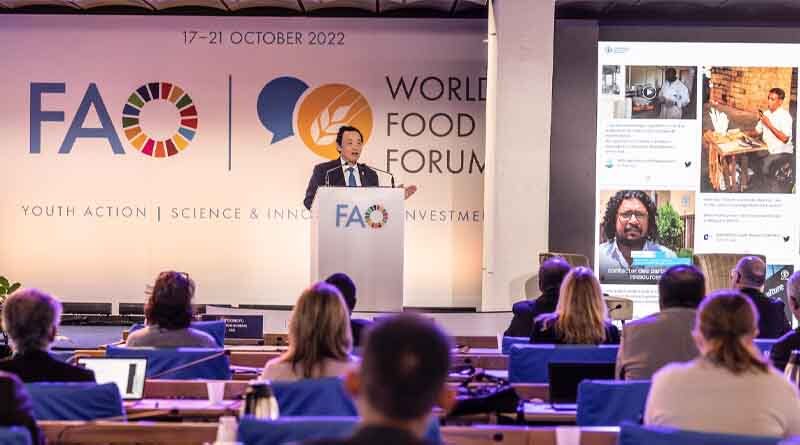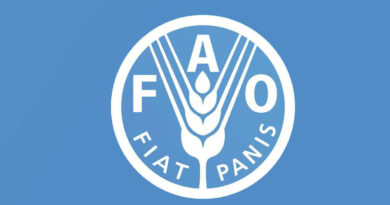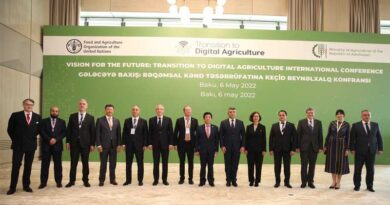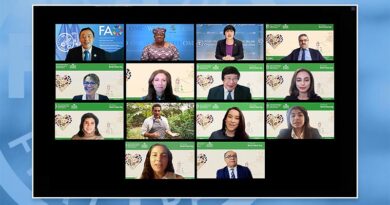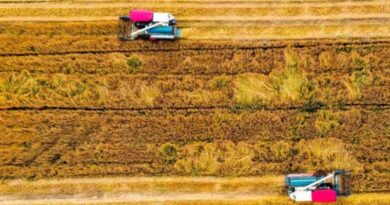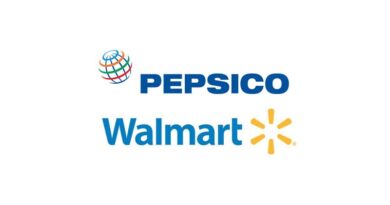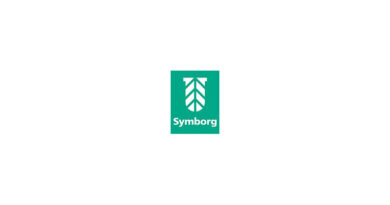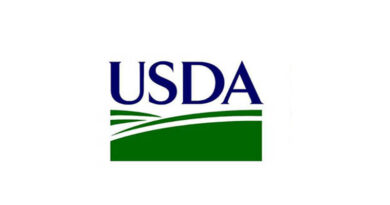World Food Forum: Transforming agrifood systems through digital technologies
26 October 2022, Rome: The capacity and potential of digital technologies to help solve many complex problems in our agrifood systems came under the spotlight at a special event of the World Food Forum’s Science and Innovation Forum.
The Digitalization of Agrifood Systems event hosted last Friday by the Food and Agriculture Organization of the United Nations (FAO) at its Rome headquarters, explored the digital capabilities and opportunities to usher transformational impact for vulnerable populations in bridging the rural divide and empowering youth and women to access information, technology, and markets.
Through an emphasis on science, technology and innovation, the event offered a platform to spark discussions and showcase concrete examples of digital technologies that are accelerating the achievement of the Sustainable Development Goals (SDGs) and the FAO Four Betters: better production, better nutrition, a better environment, and a better life, while leaving no one behind.
Data-driven agriculture promises opportunities of more efficient, inclusive, resilient and sustainable agrifood systems, positively affecting food markets and agricultural productivity to enhance food security.
Addressing the event, the FAO Director-General QU Dongyu highlighted “the centrality of science, technology and innovation for agrifood systems transformation globally”. He further noted that “Digitalization makes the business fit to the purpose, to the benefit of all. It enables trust-building between consumers and producers, and it empowers governments to undertake quality control through digital governance systems”. Finally, Qu added that through the new Digital FAO “all 194 Members can access all information online; all meetings are held virtually and can be accessed by capitals across the world. This is full transparency.”
Also in attendance were some Permanent Representatives from FAO’s 194 Member States as the event focused on the existing hunger crisis facing eight percent of the world’s population through the means of digital agriculture.
FAO’s technical expertise and credibility as a knowledge and evidence-based organization enables it to translate the vision of digital agriculture into concrete action for Members and promote policy agendas to address the digital gap and “massify” digital benefits.
Transformation in action
The Digitalization of Agrifood Systems event brought together representatives from the Ethiopia Agricultural Transformation Agency (ATA), Uganda Development Bank, International Atomic Energy Agency (IAEA) and Cornell University to share their practices and outcomes in further supporting each other’s common agenda for enhancing agrifood systems through digital technologies.
Temesgen Gebeyehu, the director of digital agriculture of ATA shared a solution that was introduced in Ethiopia, a “call-in automated helpline for famers which can be accessed in six languages” to provide agricultural advice or COVID-19 information. The hotline system is also able to use farmers’ personal data and “send out warnings informing them about crop diseases and pest infestations”.
The Uganda Development Bank is in the process of digitizing loan appraisals by using a “credit scoring algorithm” obtained from “farm data, household data and transaction history” to help farmers in rural communities with crop and livestock insurance, said Francis Mwesigye, UDB Chief Economist.
”Linking nuclear and digital techniques for enhancing the use and conservation of soil and water resources is key to enhance agricultural productivity, resilience to climate change and remediation of environmental pollution,” said Gerd Dercon, Head of the Soil and Water Management and Crop Nutrition Laboratory at the FAO/International Atomic Energy Agency Centre of Nuclear Techniques in Food and Agriculture, presenting examples of agency’s work. This includes using cosmic ray neutron sensor for soil moisture monitoring, linking cosmic ray neutron sensors and satellite imagery data and agricultural water management with the AquaCrop productivity model.
More collaboration is now expected between FAO and IAEA to make long-term real-time soil moisture and relevant observation data available on FAO’s Hand-in-Hand Geospatial Platform, as well as on the GEO-AI challenge or benchmarking on soil moisture remote sensing inversion using the UN OpenGIS GEO-AI platform.
FAO and Digital Agriculture
FAO is championing transformational changes and digital has now been fully incorporated into the organization’s Strategic Framework 2022-31, and is reflected in its day-to-day work, with the new Digital for Impact stream supporting policy-making, providing key information and connecting various stakeholders, but also providing digital tools to farmers – all in the context of accelerating progress towards the SDGs.
At Friday’s event, FAO’s Chief Economist Máximo Torero cited examples of FAO’s digital projects such as the 1000 Digital Village Initiative which is helping to bring digital services to rural communities enabling economic livelihoods and social cohesion. In making digital technologies more inclusive, it can support rural development and transform agrifood systems in low and middle income countries. In particular, FAO Representative in Ecuador, Agustin Zimmerman, showcased the successful impact of this initiative in the Latin American and Caribbean where since 2021, 52 agrotourism projects, from 14 countries involved, participate with the aim of supporting and promoting digitalization in rural tourism experiences that are linked with agrifood systems.
FAO together with the International Telecommunication Union (ITU), has created the E-Agriculture Strategy Guide to assist countries in developing their national e-agriculture strategy. These strategies are helping to rationalize resources, generate new revenue streams and improve rural livelihoods. In addition, FAO has developed applications, platforms and databases to increase access to useful information, maps and statistics such as the Digital Services Portfolio, presented at the event by FAO Representative in Rwanda, Coumba Sow, who highlighted the importance of bringing those products closer to the farmers in the field, as well as citing several examples of successful digitalization initiatives in Africa to facilitate information sharing and acquiring loans.
Also Read: List of pesticides restricted and banned for use in Agriculture in India
(For Latest Agriculture News & Updates, follow Krishak Jagat on Google News)

